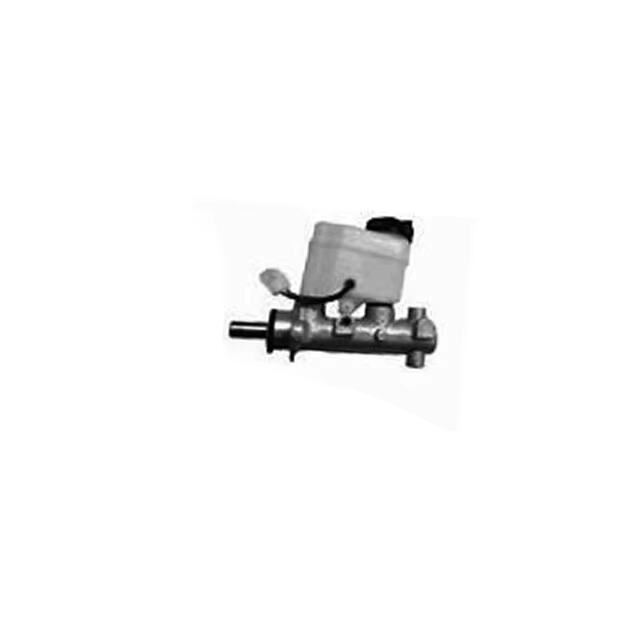Introduction: The Evolution of Braking Systems in 2025
The development of braking systems is a fascinating evolution, effected both by technological innovation and governmental regulation. Until now, braking systems used basic “caliper and pad” designs to provide basic stopping power. And, like everything else, technology has evolve and braking has completely changed with all the development in hydraulics and electronics. By 2025, advanced systems such as ABS and electronic brake force distribution have become ubiquitous, largely on account of stringent safety requirements and consumer demand for efficient systems.
Mandatory safety standards and demand for improved and reliable systems have been among the forces driving the development of braking systems. The safety features such as ABS are becoming mandatory by the government in major markets and with that the vehicles must be equipped to sustain in different terrains as well. Furthermore, the consumers are also looking for a car that provides safety and performance, which requires the manufacturers to be more and more innovative. DYNAMIC BRAKING Bike brakes are not the most intelligent parts, and stopping is an actual activity. So there's been a huge drive for intelligent braking solutions that provide the best in rider safety and comfort.
Regenerative Braking Systems: Powering Efficiency and Sustainability
How Regenerative Braking Reduces Energy Waste
Regenerative brake systems are the key technology to save energy. Such systems take advantage of the energy that is usually wasted in braking by converting the kinetic energy into electrical energy that is then stored until it is needed again. This process greatly improves energy recovery during brake, assisting in prolonging the life span of vehicles. Indeed, it has been reported that the regenerative braking can lead to the energy efficiency enhancement of about 30% for EVs. For instance, electric vehicles that contain regenerative braking cut down on both gas usage and carbon emissions, which makes them a popular pick for environmentally-minded folks.
Integration with Electric and Hybrid Vehicles
Regenerative braking is naturally built into the design of electric and hybrid vehicles (EVs and HEVs), representing a major stride in automotive design. This compounding facilitates such vehicles taking maximum use of the regenerative system when recharging the battery upon brake application leading to energy saving. Prominent vehicle manufacturers such as Tesla and Nissan, include regenerative braking in their automobiles, proving the practical and financial viability of regenerative braking. As the automotive industry trends towards sustainability, the confluence between battery technology and regenerative systems will only become stronger, driving increasingly advanced energy-management systems in the next vehicle models.
Advancements in Energy Recapture Technology
Energy recapture developments There have been new developments in energy recapture which increase the efficiency of systems using regenerative braking. Advances such as the innovation of supercapacitors and new energy storage development have remarkably enhanced the capacity of storage and reutilization of energy in a more efficient way. In addition the software solution is also vital for ensuring efficient recovery system by controlling the distribution and storage of the recaptured energy. Industry experts argue that these developments will stimulate additional investments and improvements in energy recapture technologies, and that regenerative systems play a critical role in establishing sustainable and efficient solutions to transportation.
Electronic Braking Systems (EBS): Precision Control for Modern Vehicles
From Hydraulic to Electronic: The EBS Revolution
The changeover from hydraulic to electronic braking systems represents a crucial new phase in vehicle technology, based as it is on the need to deliver ever greater levels of accuracy and control to drivers. The trend started in the late 20th century, when electronic systems yielded weight savings and quicker response times over traditional hydraulic brakes. Much like the developments in electronics and automotive sensors, the development of the EBS has progressed and has enabled more accurate control of the brake pressure. According to Research and Markets quoted industry analyst-this significantly increases vehicle performance by reducing brake fade, braking the vehicle straighter and improving the vehicle's stability under load and on the highway.
Enhanced Responsiveness in Emergency Scenarios
Braking assist systems with increased vehicle control response and stabilityicy situation or disaster situations483Electronic Brake Systems (EBS) offer a decisive improvement of vehicle control in emergency casesا and brake stability. EBS use sophisticated algorithms to adjust brake pressure to individual wheel ends for improved forcedistribution, even under difficult conditions such as wet or icy roads. According to is not reported as a contributing factor in crashes involving any vehicle, but EBS have been shown to reduce accidents with several vehicle types (trucks). ACCIDENT FACTORS EBS have been shown to reduce the number of trucks involved in accidents by nearly 20 percent, according to industry data. There is strong support for EBS from safety organizations who claim they are capable of avoiding being exposed to very serious road accidents, and evidence of this effectiveness is available in studies from a range of countries.
Synergy with Autonomous Driving Technologies
EBS (Electronic Braking System) plays a vital part in the integration of self-driving with cars, and in terms of creating new forms of advanced communication and sharing of data between cars currently already found on your road. As the automotive OEMs are focusing more on the autonomous vehicle models, this integration enhances the capability of EBS to communicate effectively with sensors and control modules, in order to deliver the best performance. For instance, Tesla uses advanced EBS as part of its self-driving systems, resulting in better safety and reliability. Vehicle technology specialists expect the increasing development of EBS to be key in the trajectory of autonomous vehicles, as they cite the progress being made in smart braking systems that to become the backbone of the future's automotive sector. The combination of these systems migrates to more efficient, dependable, safe autonomous driving.
Autonomous Emergency Braking (AEB): The AI-Powered Safety Net
Sensor Fusion and Collision Prediction Algorithms
AEB systems use a sensor fusion technology to improve vehicles perception and to predict future collision threat. Using information from multiple sensors, such as radar, cameras and lidar, AEB systems can form a complete view of the environment and make a more accurate prediction of an impending collision. While this method of prevention sounds high tech, it’s been highly successful in real world testing, where studies have found front-end crashes reduced by 40%. However, automotive industry technology experts say that these predictive algorithms are the new frontier of vehicle safety, enabling analysis and response to dynamic driving conditions in real time. The intersection of these capabilities is an important step toward reducing collisions and building consumer confidence in autonomous vehicles.
Night Vision and Pedestrian Detection Capabilities
AEB systems have continued to develop with developments such as night vision and pedestrian detection, adding to daytime safety during periods of low visibility. Such technology helps the vehicles to see obstacles and pedestrians more clearly even if visibility is a issue. Studies have demonstrated that such innovations can deliver significant risk reductions in pedestrian crashes, further supporting AEB deployment. Expert opinion attaches social importance to the improvements, citing that they are due to a strong reduction in nighttime accidents. With the proliferation of such technologies, the next advancement in vehicle safety will be setting new standards not only for drivers, but for pedestrians.
Real-World Impact on Accident Reduction Rates
The installation of AEB system in fleets and consumer automobiles has led to significant reductions in collisions. According to statistics, areas that have had AEBs very prevalent have fewer traffic accidents, proving that it was very effective. Furthermore, it’s not just added safety on our roadways, it’s also less insurance by preventing crashes. Information from insurance companies and researchers also supports that AEB adoption could, in the long term, provide cost benefits to the owners of vehicles and to the insurers as well. This double benefit in terms of safety and economic gains highlights the relevance of fitting AEB on all vehicles and contribute to change towards a safer road environment.
Brake-by-Wire Technology: Rewriting the Rules of Vehicle Dynamics
Eliminating Hydraulic Systems for Weight Reduction
Brake-by-wire is also significantly changing vehicle dynamics, since it replaces conventional hydraulic systems with electronic ones and thereby allows for a weight saving. Without the need for hydraulic lines, pumps and fluid reservoirs, vehicles can have a simpler design that is lighter and more energy-efficient. For example, according to industry information, the overall weight of a vehicle may be reduced by several kilograms, depending on the type of vehicle, by adopting a brakeby-wire system. This weight loss is beneficial to fuel economy and handling, as it takes less energy to accelerate and brake a lighter car. According to industry experts the development of this technology is critical to satisfying increasingly strict emissions legislation and also for the optimisation of modern vehicle performance attributes.
Customizable Braking Profiles for Performance Driving
Certainly one of the more intriguing aspects of brake-by-wire is its ability to provide drivers with adjustable braking profiles for individual driving modes and conditions. This versatility gives drivers, especially users of vehicles that can be highly tuned, the option to set their braking sensitivity and change the tripping speed of the brakes according to individual needs or on different tracks. Now performance drivers will have even more confidence on the track. Automotive performance experts say customizable brake settings are becoming more popular as drivers seek a more organic experience they can feel while traversing a difficult path.
Cybersecurity Challenges in Fully Digital Systems
Although there are several benefits to brake-by-wire systems, they also may pose cybersecurity threats that need to be addressed in order to maintain vehicle safety. Since such systems are overwhelmingly based on digital signals, they are vulnerable to theoretical cyber attacks that can influence vehicular control. Recent figures illustrate an increase in cyberattacks against automotive technology, which underpins the necessity for solid security arrangements. Cybersecurity professionals advise multi-layered security measures to protect these digital systems, such as strong encryption, frequent software patches and real-time threat monitoring. Solving these problems is essential to preserving public confidence and securing safe incorporation of digital technology in the vehicles of tomorrow.
FAQ
What are the key trends shaping braking systems in 2025?
The key trends shaping braking systems in 2025 include the integration of smart technologies and the use of regenerative braking in electrified vehicles, enhancing safety, energy efficiency, and vehicle performance.
How does regenerative braking improve vehicle efficiency?
Regenerative braking improves vehicle efficiency by converting kinetic energy into electrical energy during braking, which can be stored for later use, leading to energy recovery and reduced fuel consumption.
What is electronic braking, and how does it benefit modern vehicles?
Electronic braking replaces traditional hydraulic systems with electronic systems, offering benefits such as reduced weight, faster response times, and precise modulation of brake pressure for improved vehicle performance.
How do AEB systems contribute to road safety?
AEB systems enhance road safety by using sensor fusion technology to predict potential collisions and apply brakes automatically, significantly reducing front-end collisions and pedestrian accidents.
What are the benefits and challenges of brake-by-wire technology?
Brake-by-wire technology offers benefits like weight reduction, customizable braking profiles, and improved handling. However, it poses cybersecurity challenges due to its reliance on digital signals, requiring robust security measures.
Table of Contents
- Introduction: The Evolution of Braking Systems in 2025
- Regenerative Braking Systems: Powering Efficiency and Sustainability
- Electronic Braking Systems (EBS): Precision Control for Modern Vehicles
- Autonomous Emergency Braking (AEB): The AI-Powered Safety Net
- Brake-by-Wire Technology: Rewriting the Rules of Vehicle Dynamics
- FAQ
 EN
EN
 AR
AR
 FR
FR
 KO
KO
 PT
PT
 RU
RU
 ES
ES


